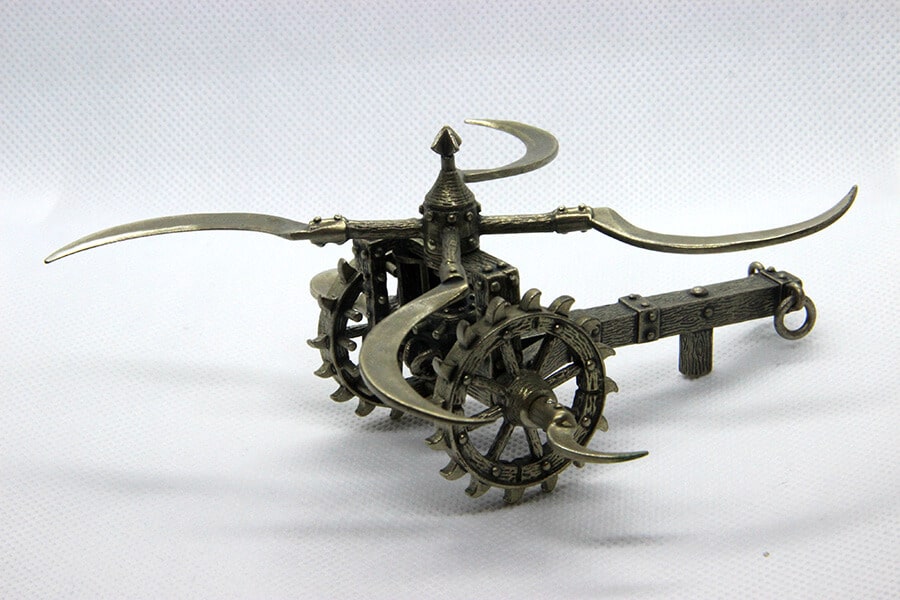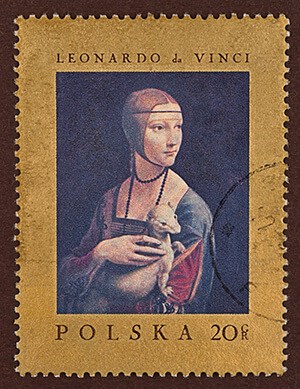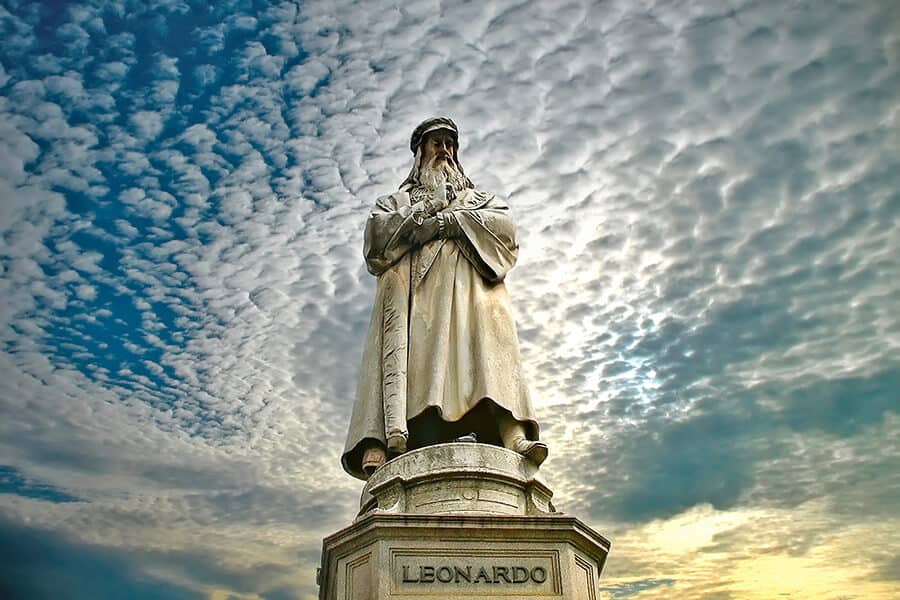Leonardo da Vinci, one of the most significant creative geniuses of all time, was a man whose gifts cannot be narrowly defined. He was an excellent painter, sculptor, thinker, and philosopher, and his genius shone in every single work that he produced. If you asked experts to describe da Vinci in one word, they would probably say that excellence was the determining reality. In every stroke of his brush, in every touch was revealed a profound sense of philosophy - the notion that nature is the only perfection; and God, the supreme creator, is the one who leads us to beauty.
I, Leonardo
The movie “I, Leonardo” takes a biographical look at an incomparable genius. It is divided into separate parts, connected with life and art, dedicated to special works, and reflecting the state of Leonardo’s soul. What was the eternal riddle that da Vinci was willing to probe? What fears and unconscious memories followed him through his whole life? And his life, what was it about, really? Let`s go through the hidden places of Leonardo da Vinci.
As a well-spent day brings happy sleep, so a life well spent brings happy death
Since early childhood, Leonardo felt a loneliness that increased gradually with every year of his childhood and growing up. Art became a kind of therapy for him, and medicine on the way to the depths of his soul.
Leonardo da Vinci was born in Vinci, in Italy, the product of an illicit affair between a prosperous notary and a peasant woman, Caterina di Meo Lippi. Leonardo did not get his father’s name, as he was a source of shame, and Caterina was poor, from the lowest social stratum. The notary hid the baby’s birth, and the boy got the name of his mother’s home for a surname. And now, we all know him a Leonardo da Vinci.
Changing the Customary and the Habitual
At an early age, Leonardo got into the art school in Florence, where he learned from famous teachers. He learned technical skills, such as metalworking, leather arts, carpentry, drawing, painting, and sculpting. Da Vinci received a formal education that was limited to basic reading, writing, and math, but his other-worldly gifts as an artist were evident from an early age. Later, he would always call himself illiteral, without knowledge of grammar and rules, a man who knew a lot, but what was still unknown to him was enormous.

Da Vinci was passionate about the human body. As a student, he surpassed his master and became one of the most accurate painters, stunning inventors, whose creations were based on the postulates of the Golden Ratio. All his surveys were hidden in his writings, in chaos and disorder, just like his thoughts. He dissected dozens of bodies to create detailed drawings of skeletons, skulls, and bones. He also studied physiology, making wax moulds of the brain and heart to better understand how blood flows through the vascular system, and creating some of the first drawings of human organs, including the appendix, reproductive organs, and the lungs. Leonardo also drew “Vitruvian Man” – the legendary representation of perfect human proportions amidst geometric figures that changed radically the customary understanding of art.
Emotional Ghosts
The film covers other stories that take us to the other side of the Leonardo story, demystifying history and da Vinci’s personal feelings. “The Last Supper”, “Mona Lisa”, “Dama con l’ermellino”, ”The Virgin and Child with St Anne”, and “The Baptism of Christ”.

The movie “I, Leonardo”, directed by Jesus Garces Lambert, shows the artist’s path from the early phases of his life to the mature phase of his career. He searched for perfection to the last days of his life. Whenever you start watching the story, it merges into the thoughts and views of the artist. Leonardo (Luca Argentero) takes on the contradictions of science and art, and takes a risky decision to connect these opposite fields. Likewise art and science, Leonardo perceives the ongoing contradiction between memories and the conscious acceptance of the world. However, most of his works are influenced by emotions, as da Vinci tried to find the answers for inner conflicts: why did his mother abandon him? Or did she do the best she could, giving him up to his father’s family? What is the purpose of life? With every new step towards painting, sculpture or invention, Leonardo traveled down inner passages fraught with emotional ghosts. In his mind, he contacted every hero that he painted on canvases or walls.
So Who Are You, Leonardo?
The Storyline recounts his relationship with his father, his memories of his mother and other people, including those who were most intimate with him. Throughout his career, Leonardo interacted with his young students, who appeared in his life in their teens: above all Salaì and Francesco Melzi. The first, a young student, Salai was named after the figure in the myth of creation – the devil. His heart was made of lies, stealing, and cunning. But along the way, for many years, he was close to Leonardo. As well as another student – Francesco Melzi. A graduate of the Lombardian school of art, Francesco studied art with Leonardo. He took classes and was in charge of ordering all of da Vinci’s notes and books. Later, he learned the master’s technique and would be known as Leonardo`s follower.
The visual storyline contains a variety of exciting cinematic techniques. It evokes the magic world – the question of acceptance and how did Leonardo exist, in the internal and the external. Leonardo’s reverent attitude to everything, everything around him, everything created by God – it was all to be admired. He studied human beings, with their bodies scaled to nature, and therefore many phases of his work concerned flourishing gardens, flowers, and new life beginnings. From the smallest buds to the greatest inventions – da Vinci was looking for perfection in each petal and each bit of solid material. What we know about Leonardo is only the tip of the iceberg, only the part revealed to people from his inner, hidden world. He did so with a purpose, so that future generations would wish to ask him, well: So, who are you, Leonardo?
Photos: Shutterstock
Support us!
All your donations will be used to pay the magazine’s journalists and to support the ongoing costs of maintaining the site.
Share this post
Interested in co-operating with us?
We are open to co-operation from writers and businesses alike. You can reach us on our email at [email protected]/[email protected] and we will get back to you as quick as we can.









